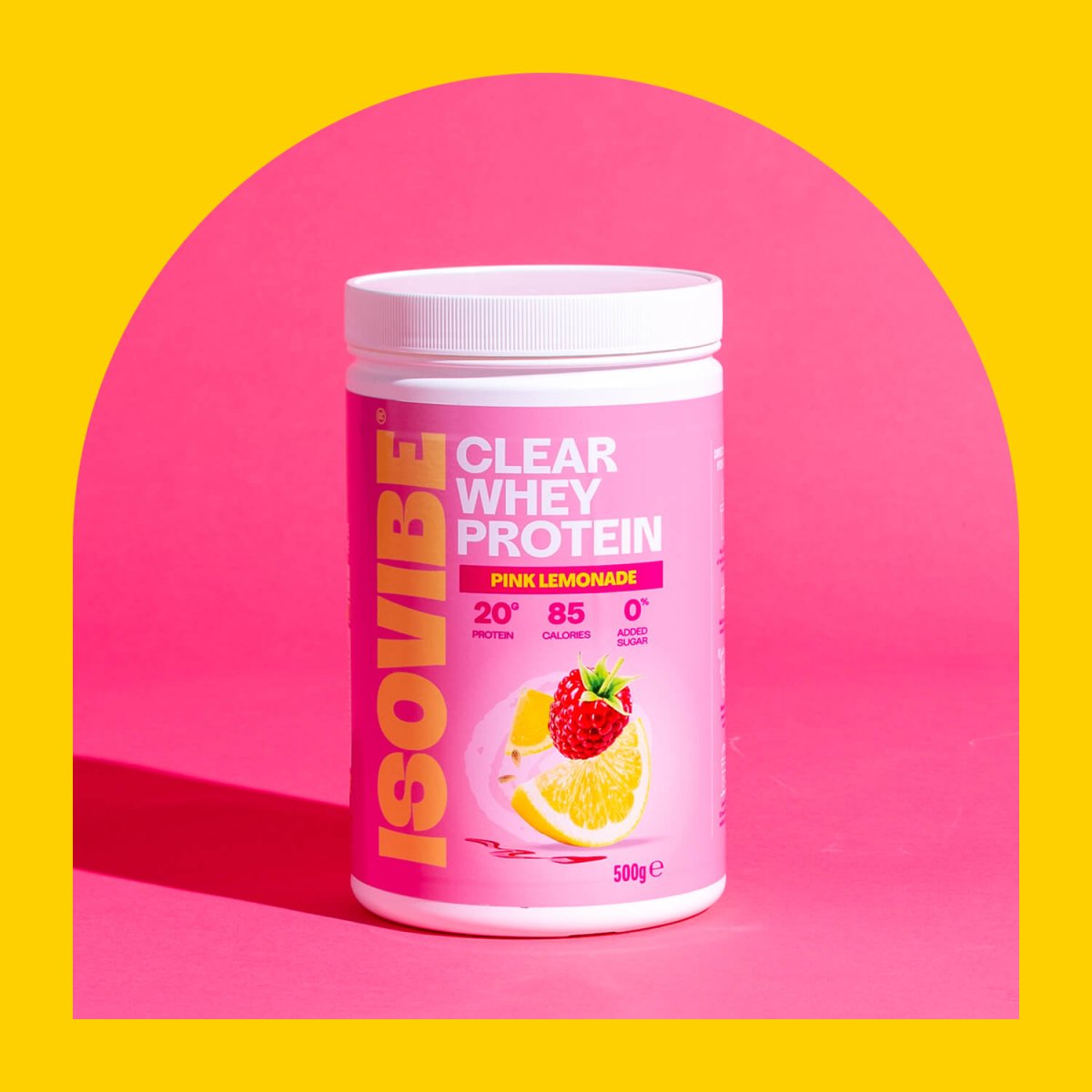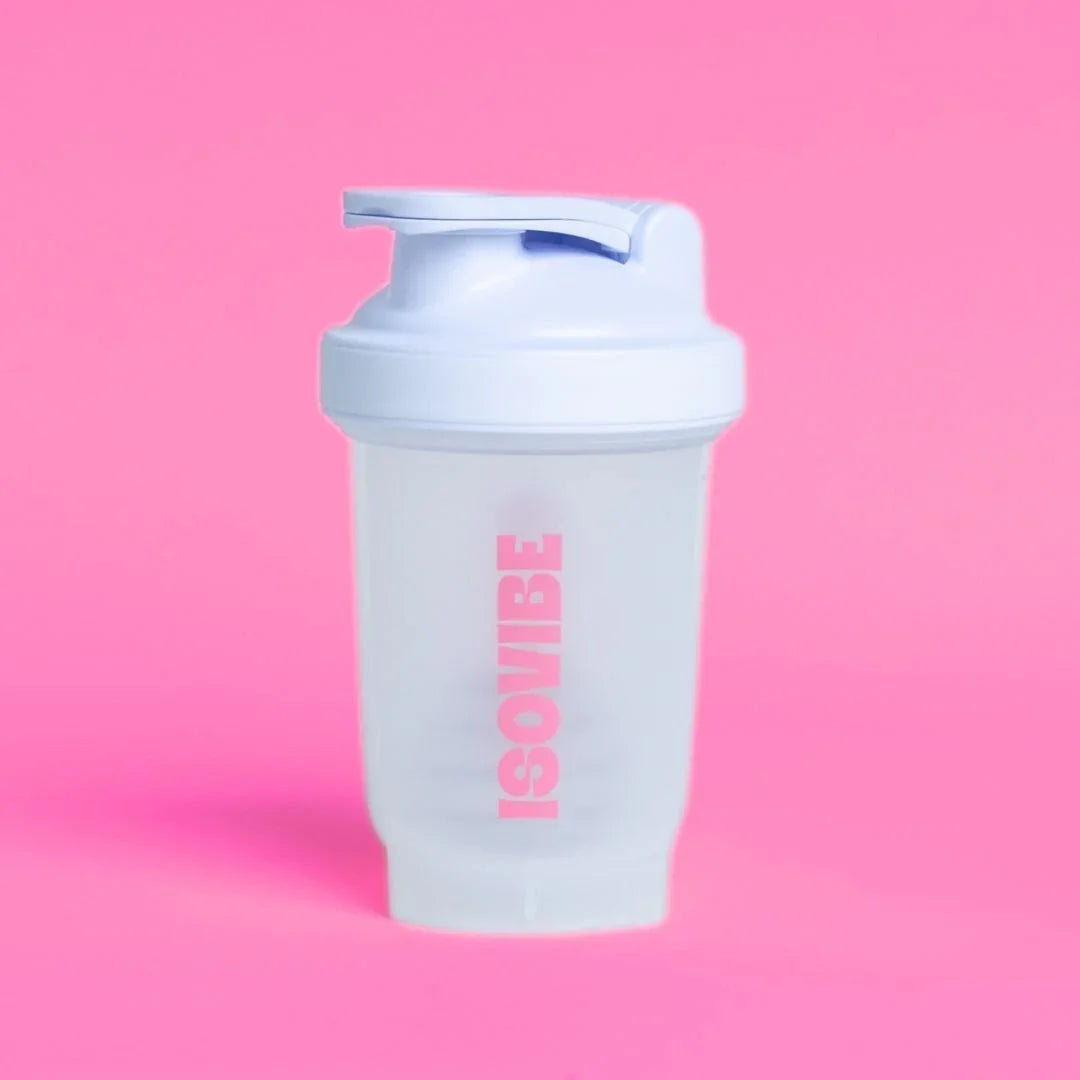Cycle Syncing Your Protein: Fuelling Energy and Mood Through Each Phase
Why Your Protein Needs Change With Your Cycle
If you’ve ever had a week where you’re basically a gym warrior and then the next week you’re exhausted, craving everything, and wondering why life feels harder.. you’re not losing the plot. Your menstrual cycle isn’t just about your period; it shifts through four totally different hormonal phases, and each one changes your energy, mood, training capacity, and what your body needs nutritionally.
Here’s the part most fitness advice forgets: your metabolism doesn’t stay the same all month. Research shows your resting metabolic rate can jump by up to 10% in the second half of your cycle.¹ That’s a big energy increase, and if you don’t fuel for it, you’re way more likely to feel tired, irritable, or hunting down quick sugar hits like your life depends on it.
This is where protein becomes the real MVP. Yes, it helps with muscle recovery, but it’s also what your brain uses to make serotonin and dopamine, the neurotransmitters that keep your mood steady, your cravings manageable, and your energy consistent. When you match your protein intake to what your body is actually asking for each phase, everything feels smoother: better workouts, better recovery, fewer PMS symptoms.
And don’t worry… this isn’t about tracking every micro-detail or doing a full lifestyle overhaul. It’s just small, smart shifts that work with your biology instead of fighting against it.
How Protein Influences Mood & Energy
Before we dive into each phase of your cycle, here’s the bigger picture: protein isn’t just about muscle gains. Every amino acid you eat becomes a building block for the things that keep your body and brain functioning, including the neurotransmitters that control mood, focus, energy, and even cravings.
The serotonin connection
Tryptophan (an amino acid found in protein) turns into serotonin, the hormone that helps regulate mood, sleep, and appetite. During the late luteal phase (aka the week before your period), your brain increases serotonin transporter activity, which reduces the amount of serotonin available.² That’s why PMS can feel so real.
Eating tryptophan-rich foods (poultry, dairy, eggs, nuts) gives your brain the raw material it needs to keep serotonin levels steadier.
Research shows that when tryptophan drops, premenstrual irritability gets noticeably worse.³ And those intense carb cravings right before your period? That’s your body trying to get a serotonin boost - not a lack of willpower. Getting enough protein helps your brain make what it needs while keeping your blood sugar stable.
The dopamine advantage
Tyrosine is another amino acid found in protein, and it supports your dopamine, norepinephrine, and adrenaline production, which are basically the brain chemicals responsible for motivation, focus, and mental clarity.
Right before your period, tyrosine levels can dip.⁴ Translation: that “why can I not get anything done?” feeling has a biological reason.
Keeping your protein intake consistent helps maintain these neurotransmitters so your motivation doesn’t tank completely.
The muscle-building constant
One thing fitness culture gets confused about: your ability to build muscle doesn’t actually fluctuate across your cycle. Leucine (the key amino acid that triggers muscle protein synthesis) works the same all month.⁵
What does matter? Getting enough protein overall and timing it well around training. Consistency wins.
Digestion matters
If traditional whey leaves you bloated (especially around your period), you’re not imagining it. Regular whey concentrate contains lactose and fats that can hit harder when hormones already make digestion a bit chaotic.
Clear whey is basically the glow-up:
-
Made from isolate or hydrolysate
-
Super low lactose
-
Light + easy to digest
-
Mixes like juice, not a milkshake
-
Perfect when you’re bloated or training in the hotter luteal phase
It gives you all the essential amino acids without the heaviness - ideal for sensitive digestion days.
The Cycle in Four Phases
Your cycle isn’t just “period vs not period.” It’s four unique phases - each with its own energy levels, training sweet spots, and protein needs. Here’s how to fuel like a pro through all of them.
Menstrual Phase (Days 1–5): Recovery & Reset
What’s happening hormonally
Oestrogen and progesterone are at their lowest, which is why you might feel tired, crampy, or just not in the mood to eat much. Your body also reacts more strongly to exercise during this phase, so think of this as your natural slow-down week.⁶
Training focus
Be gentle with yourself. This is a great time for:
-
Walks
-
Yoga
-
Light cardio
-
Low-intensity strength
If you do train harder, keep it manageable and listen to your body.
Protein guidance
Stick to your usual protein target (1.6-1.8 g/kg), but pick foods that are easy to digest. Aim for 20-25g per meal and 0.3g/kg post-workout.
If cramps or bloating make eating annoying, go for lighter options. Clear whey protein isolate is ideal here - low lactose, low fat, easy on the stomach.
Try this:
-
Greek yoghurt + berries + granola
-
Poached eggs on wholemeal toast
-
Clear whey mixed like a juice
-
Chicken + veg soup
-
Salmon + steamed greens
Follicular Phase (Days 6-13): Your Strength Window
What’s happening hormonally
Oestrogen starts rising = energy up, motivation up, focus up. Your metabolic rate is steady, and your body is super responsive to training.
Training focus
This is your progressive overload era.
Perfect for:
-
Heavy lifting
-
HIIT
-
Challenging sessions
-
Building strength and power
Protein guidance
Consistency rules. Hit 20-30g protein per meal, and get 0.32-0.38g/kg of protein within 1–2 hours post-training.
Leucine (in your protein) triggers muscle protein synthesis every time you hit your dose - so timing matters more when you’re pushing harder.
Try this:
-
Protein oats + nut butter + banana
-
Turkey + avo wrap
-
Clear whey pre-workout
-
Cottage cheese + crackers + cherry tomatoes
-
Beef stir-fry + quinoa
Ovulatory Phase (Days 14–16): Peak Performance
What’s happening hormonally
Oestrogen peaks, LH surges, and honestly… you might feel like a superhero. Strength, coordination, and power are all naturally higher here.
Training focus
Go for it. This is the perfect time to:
-
Hit PBs
-
Sprint
-
Push compound lifts
-
Take on intense WODs
Protein guidance
Keep protein steady and evenly spread - 25-30g across 4-5 eating moments. This fuels top-tier performance and faster recovery.
Try this:
-
Smoked salmon + scrambled eggs
-
Chicken salad with mixed greens
-
Protein pancakes + fruit
-
Clear whey post-training
-
Lamb + roasted veg
Luteal Phase (Days 17-28): Higher Demands & PMS Support
What’s happening hormonally
Progesterone rises (with some oestrogen), your metabolism climbs 9–10%, and protein breakdown may increase. You may also feel warmer, hungrier, moodier, or more fatigued as PMS kicks in.
Training focus
Shift into your endurance girl era. Go for:
-
Steady-state cardio
-
Moderate-intensity training
-
Slightly longer rest periods
-
Movement that reduces stress
Protein guidance
This is where smart adjustments matter. Add 10-15 extra grams of protein per day to support the higher metabolic demand and stabilise cravings.
Protein-rich snacks = serotonin + dopamine support. This is how you balance your mood, reduce cravings, and keep energy stable.
Pair protein with complex carbs for blood sugar stability.
Try this:
-
Hard-boiled eggs + oatcakes
-
Greek yoghurt + walnuts + dark chocolate
-
Clear whey (lighter than a normal shake)
-
Hummus + veggie sticks
-
Tuna on wholegrain crackers
Real-Life Planning: Putting It Into Practice
High-Energy Day (Follicular/Ovulation)
-
Breakfast: Protein oats (30g)
-
Pre-training: Clear whey (20g)
-
Post-training: Chicken + sweet potato (25g)
-
Snack: Greek yoghurt + granola (15g)
-
Dinner: Salmon + quinoa + greens (30g)
-
Total: ~120g protein
Luteal Phase Day (Higher Needs)
-
Breakfast: Eggs + toast + avo (25g)
-
Snack: Cottage cheese + apple (12g)
-
Lunch: Turkey salad wrap (28g)
-
Pre-training: Clear whey (15g)
-
Snack: Eggs + oatcakes (12g)
-
Dinner: Beef stir-fry + noodles (30g)
-
Evening: Almonds (6g)
-
Total: ~128g protein
Key Principles
✔️ Eat protein every 3-4 hours
✔️ Aim for 0.3-0.4g/kg around training
✔️ Choose lighter proteins during your period
✔️ Add extra snacks in your luteal phase to help mood + cravings
Safety & Inclusivity: When to Get Personal Advice
Cycle syncing can be amazing, but it’s not for everyone. Speak with a GP or dietitian if you:
-
Are pregnant, breastfeeding, or trying to conceive
-
Have PCOS, endometriosis, or hormone conditions
-
Have irregular cycles or no period
-
Are perimenopausal or menopausal
-
Have a history of disordered eating
-
Take hormonal contraception
-
Have kidney conditions affecting protein intake
If you’re on hormonal contraception
Your natural cycle hormone peaks are suppressed, so you won’t get the same fluctuations. Keep protein consistent at 1.6-1.8 g/kg/day and focus on workout timing rather than cycle phases.
If you’re perimenopausal
Hormones can be unpredictable. Stick to consistent daily protein (often slightly higher (1.8-2.0 g/kg)) and listen to how your body feels instead of strict phase tracking.
Try Isovibe Clear Whey for Light, Effective Fuel
Whether you’re bloated during your period, training hard mid-cycle, or just need a protein that doesn’t feel heavy, Isovibe Clear Whey Isolate gives you 20g of premium, fast-absorbing protein with zero sugar and a refreshing, fruit-juice-style finish.
Perfect for every phase of your cycle. It’s why thousands of women are switching to clear protein.
References
-
Cambridge Core. "Resting metabolic rate and the menstrual cycle." Proceedings of the Nutrition Society. https://www.cambridge.org/core/journals/proceedings-of-the-nutrition-society
-
Max-Planck-Gesellschaft. "Not just mood swings but premenstrual depression." https://www.mpg.de/19818475/0127-nepf-not-just-mood-swings-but-premenstrual-depression-serotonin-transporter-in-the-brain-increased-149575-x
-
PubMed. "Acute tryptophan depletion aggravates premenstrual syndrome." National Library of Medicine. https://pmc.ncbi.nlm.nih.gov/articles/PMC3118460/
-
Your Wellness Center. "Amino Acids and Brain Chemistry: Balancing Mood, Energy, and Blood Sugar." https://yourwellnesscenter.com/blog/amino-acids-and-brain-chemistry-balancing-mood-energy-and-blood-sugar/
-
Oxford Academic. "Myofibrillar Protein Synthesis Rates Do not Differ With Low and High Estradiol Concentrations Across the Menstrual Cycle." The Journal of Clinical Endocrinology & Metabolism. https://academic.oup.com/jcem/advance-article/doi/10.1210/clinem/dgaf410/8206098
-
PMC, NCBI. "Female sex hormones and the recovery from exercise: Menstrual cycle phase affects responses." National Institutes of Health. https://pmc.ncbi.nlm.nih.gov/articles/PMC12418195/




